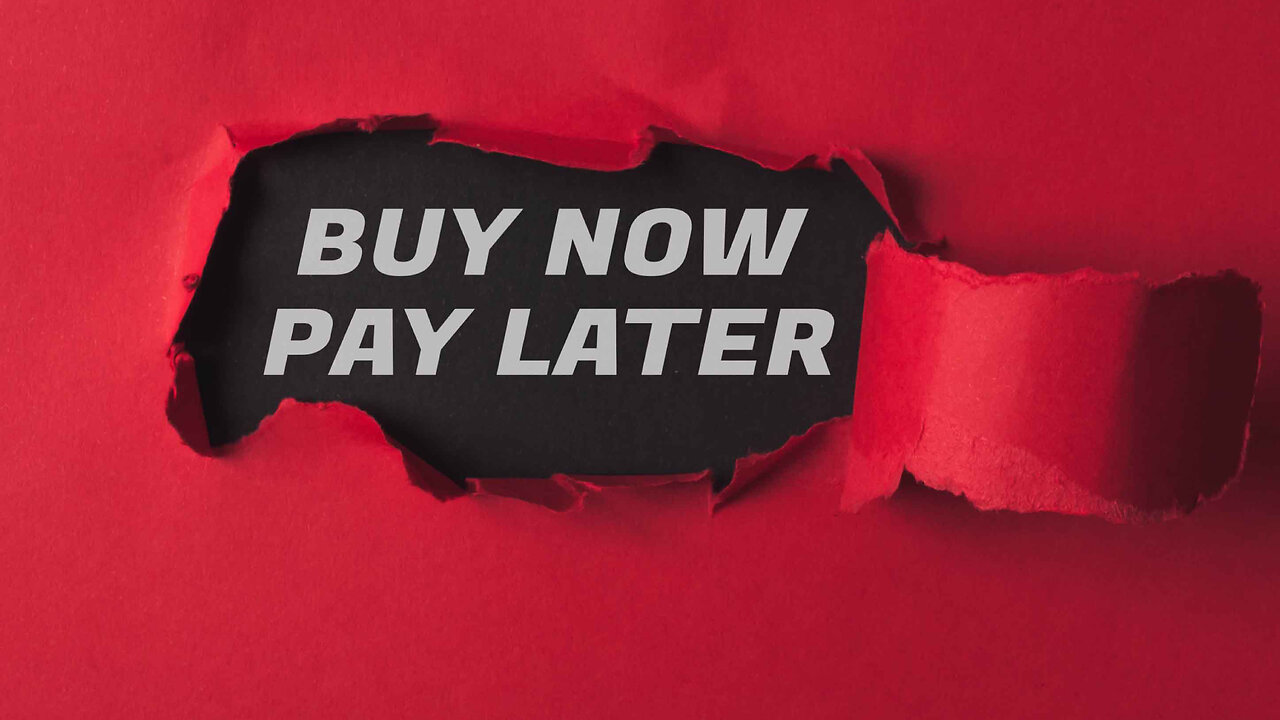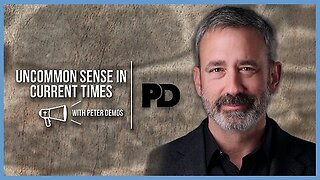Premium Only Content

Unleashing a Crisis WORSE Than 2007
Buy Now, Pay Later is causing a terrible credit crisis and potentially destroying the entire global economy in the process.
BNPL has rapidly become one of the fastest-growing forms of debt, but it carries significant risks that many consumers and the broader financial system are overlooking. Much like the subprime mortgage crisis of 2007, this debt is largely invisible and could trigger another financial disaster.
BNPL services like Affirm, Afterpay, and Klarna have become widespread in online shopping, allowing consumers to buy everyday items like groceries and electronics with little to no credit checks and no immediate interest. While these services offer the allure of zero-interest, short-term loans, they are fueling a massive, unregulated debt bubble that is quietly devastating households.
Unlike traditional layaway plans, where consumers pay for an item in installments and receive it only after the full payment, BNPL allows people to take home products immediately after making a small deposit. This model gained traction during the financial uncertainty of 2020, when online retail surged, and companies like Peloton significantly boosted BNPL companies' revenues.
The total value of BNPL loans in the U.S. skyrocketed from $2 billion in 2019 to $24.2 billion in 2021. The primary users of these services are younger consumers, particularly women under 36, many of whom don't use credit cards. Research shows that younger consumers view BNPL as less risky than credit cards, which are notorious for trapping users in debt due to high interest rates. Fixed installment payments give these users a false sense of security, as the debt doesn't accumulate like it does with credit cards.
Social media influencers have further fueled the popularity of BNPL, promoting it as a savvy financial strategy. However, the reality is far less rosy. BNPL loans are increasingly being used for essential purchases like groceries and utility bills, not just luxury items. This suggests that many people are turning to BNPL out of financial necessity, not convenience.
Despite the promise of zero-interest loans, BNPL companies still make money by charging merchants higher fees than traditional credit card processors. Retailers are willing to pay these fees because BNPL options increase sales and reduce cart abandonment. However, BNPL's lack of regulation poses significant risks. Unlike traditional lenders, BNPL providers aren't subject to the same oversight, leaving consumers vulnerable to hidden fees and unclear terms.
Moreover, BNPL loans don't contribute to building credit, but they can destroy it. Missed payments often result in debt being sent to collection agencies, which negatively impacts credit scores. With multiple BNPL loans from different providers, consumers struggle to keep track of payments, increasing the likelihood of default. According to Consumer Reports, people with four or more BNPL loans are twice as likely to miss a payment.
The most alarming issue is the rise of "phantom debt"—debt that consumers accumulate without fully realizing it, as BNPL loans aren't reported to credit agencies. This creates a hidden debt bubble that could be far larger than anticipated, with traditional lenders unknowingly exposed to significant risks.
Some experts warn that the crisis point may already be approaching, with BNPL delinquency rates surpassing those of credit cards, particularly among young users. A 2022 Citizens Advice study in the UK found that 42% of BNPL users were using credit cards or borrowing from other sources to make their repayments.
BNPL companies market themselves as revolutionary, offering financial inclusion to those underserved by traditional lenders. However, their business model increasingly resembles the dangerous lending practices that led to the 2008 financial crisis. As more people rely on BNPL for everyday necessities, the risk of widespread default grows, threatening to repeat the devastating cycle of boom and bust.
-
 1:28:13
1:28:13
Kim Iversen
9 hours agoCancelled Chef Pete Evans Exposes The One Change That Could End Big Food and Pharma
49.4K33 -
 4:20:21
4:20:21
Nerdrotic
10 hours ago $48.45 earnedDaradevil Born Again, Comics Industry CRASH, Neu-Hollywood REBUILD | Friday Night Tights #337
171K26 -
 1:32:34
1:32:34
Glenn Greenwald
6 hours agoThe Future of Gaza With Abubaker Abed; Journalist Sam Husseini On His Physical Expulsion From Blinken’s Briefing & Biden’s Gaza Legacy | System Update #391
80.4K60 -
 1:34:48
1:34:48
Roseanne Barr
9 hours ago $16.12 earnedWe are so F*cking Punk Rock! with Drea de Matteo | The Roseanne Barr Podcast #83
65.8K34 -
 1:08:20
1:08:20
Man in America
10 hours ago🇨🇳 RedNote: A CCP Trojan Horse Deceiving Americans? w/ Levi Browde
27.1K21 -
 LIVE
LIVE
I_Came_With_Fire_Podcast
13 hours agoTrump SABOTAGE, LA FIRE CHIEF SUED, and BIDEN’S LAST F-U!
369 watching -
 2:59:47
2:59:47
Joker Effect
4 hours agoUkraine in a video game? Hardest thing I have done. S.T.A.L.K.E.R.2 Heart of Chornobyl,
56.1K4 -
 1:15:22
1:15:22
Flyover Conservatives
1 day agoEczema, Brain Fog, B.O., and Gas… Eating Steak and Butter Creates Ultimate Health Hack - Bella, Steak and Butter Gal | FOC Show
46.2K2 -
 51:58
51:58
PMG
8 hours ago $2.01 earned"Can the Government Learn from Elon Musk’s 70% Labor Cut? A Deep Dive into Inefficient Agencies"
31.7K -
 6:39:15
6:39:15
Amish Zaku
7 hours agoRumble Spartans #10 - New Year New Maps
28.9K2